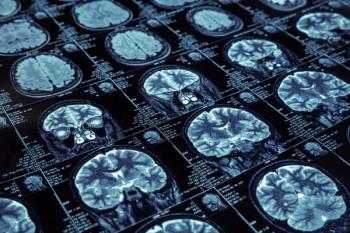
- Volume 0 0
compounding HOTLINE
Mr. Erickson is director of professional affairs at Gallipot Inc.
Q.
I have a formulation for an extemporaneously prepared ointment that lists "anionic emulsifying wax" as 4% of the formulation. What is anionic emulsifying wax?
A.
Anionic emulsifying wax contains cetostearyl alcohol, purified water, and either sodium lauryl sulfate or a sodium salt of a similar sulfated higher primary aliphatic alcohol. To manufacture the material, cetostearyl alcohol (90 g) is heated to 95?C. An anionic surfactant (sodium lauryl sulfate 10 g) and purified water (4 mL) are added to the melted cetostearyl alcohol. The mixture is heated to 115?C and maintained at that temperature while it is stirred vigorously until foaming ceases. The mixture is then cooled rapidly.
In the British Pharmacopoeia, anionic emulsifying wax is termed "emulsifying wax," which can cause some confusion. In the United States, Emulsifying Wax NF is "a waxy solid prepared from Cetostearyl Alcohol containing a polyoxyethylene derivative of a fatty acid ester of sorbitan" [NF 24]. It is considered nonionic and is known as "cetomacrogol emulsifying wax" in the United Kingdom.
The material functions to emulsify and stiffen ointments and creams. It can be added to white petrolatum or mineral oil to form nongreasy oil-in-water emulsions. When the material is combined at concentrations of 3% to 30% with white petrolatum, a water-absorbing, occlusive ointment is formed. One interesting application of anionic emulsifying wax is that it has been added to cocoa butter as 10% of the formulation to make a suppository base with a melting point of 34?C.
Incompatibilities with this wax include sodium alkyl sulfates, among them cations, such as quaternary ammonium compounds, ephedrine HCl, antihistamines, and other nitrogencontaining compounds. Also incompatible are salts of polyvalent metals (Al, Zn, Sn, Pb) and thioglycollates. One could correctly conclude from the above that the material is compatible with hard water and alkalis and acids above pH 2.5.
[Adapted from Rowe RC, Sheskey PJ, Owen SC. Handbook of Pharmaceutical Excipients. 5th ed. Washington, DC: American Pharmacists Association; 2005.]
Articles in this issue
about 18 years ago
Actemra Found to Relieve RA Symptomsabout 18 years ago
Zestra Reports Positive Results of OTC Feminine Arousal Fluidabout 18 years ago
Trial of New Weight-loss Pill Leaves Patients Feeling Fullabout 18 years ago
Oral Care Products and the Diabetic Patientabout 18 years ago
FOLIC ACID REDUCES RISK OF STROKEabout 18 years ago
FDA APPROVES UPDATED WARFARIN INFOabout 18 years ago
FONDAPARINUX MAY BE OPTION FOR HITabout 18 years ago
diabetes PRODUCT chartsabout 18 years ago
Hyperthermia, Chemotherapy Aid High-risk Cancer Patientsabout 18 years ago
High Blood Pressure: Getting the Most Out of Home MonitoringNewsletter
Stay informed on drug updates, treatment guidelines, and pharmacy practice trends—subscribe to Pharmacy Times for weekly clinical insights.

















































































































































































































